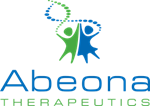CLEVELAND, May 16, 2023 (GLOBE NEWSWIRE) -- Abeona Therapeutics Inc. (Nasdaq: ABEO) today announced new data regarding three internally developed preclinical gene therapy product candidates from its adeno-associated virus (AAV) ophthalmology program that will be presented at the 26th Annual Meeting of the American Society of Gene & Cell Therapy (ASGCT), taking place from May 16-20, 2023 in Los Angeles, CA.
“The preclinical proof-of-concept data being presented at ASGCT provides early evidence of the potential of our proprietary AAV capsids and gene constructs to express the recombinant protein in target tissues and rescue mutant phenotypes in mouse disease models,” said Brian Kevany, Ph.D., Chief Technical Officer and Head of Research at Abeona. “We look forward to pre-Investigational New Drug Application meetings with the FDA for two of our programs to take place in the second quarter of 2023.”
Details for the poster presentations are as follows.
Wednesday, May 17, 2023 at 12:00 PM PT
In the presentation, entitled, “In Vivo Production of Full-Length ABCA4 Protein Following Cre-Mediated Recombination from Dual AAV Vectors in ABCA4-/- Mice,” Dr. Paul Wille, Director, Product Development, Abeona Therapeutics will present key findings:
- A dual AAV vector strategy using Cre recombinase efficiently reconstituted the ABCA4 gene, leading to full-length hABCA4 protein expression both in vitro via viral transduction of HEK293 cells and in vivo in photoreceptor cells after subretinal injection into ABCA4-/- mouse eyes.
- Cre-mediated recombination of ABCA4 was confirmed by mRNA sequencing of RNA from transfected HEK293 cells and AAV-dosed animals.
- Immunohistochemistry results confirmed correct localization of recombinant hABCA4 protein in photoreceptor cells.
Thursday, May 18, 2023 at 12:00 PM PT
In the presentation, entitled, “ABO-503, a Novel Gene Therapy for Treatment of X-Linked Retinoschisis,” Dr. Joseph Fogerty, Senior Scientist, Product Development, Abeona Therapeutics will present key findings:
- Robust RS1 expression was observed in photoreceptor cells near the injection site and in the adjacent inner retina in mutant mice six months after treatment with ABO-503.
- RS1 expression was associated with improvement in cone photoreceptor density and increased thickness of the photoreceptor outer nuclear layer.
- Full-field flicker electroretinogram (ERG) analysis showed significant improvement in cone photoreceptor function.
Friday, May 19, 2023 at 12:00 PM PT
In the presentation, entitled, “AAV Gene Therapy for Autosomal Dominant Optic Atrophy Caused by Mutation in the Opa1 Gene,” Dr. Rachel Stupay, Senior Scientist, Product Development, Abeona Therapeutics will present key findings:
- Vectors expressing Opa1 showed robust expression at both RNA and protein levels both in vitro and in vivo.
- In Opa1 knockout mouse fibroblasts, isoform variants 1, 5 and 7 expressed both RNA and protein with each variant corresponding to the expected cleavage pattern.
- Following intravitreal injection in wild type mice, variants 1 and 7 showed robust protein expression.
The posters presented at ASGCT are available on ASGCT’s ePoster site and the Events page of Abeona’s website at https://investors.abeonatherapeutics.com/events.
About Abeona’s AAV Ophthalmology Program
Abeona’s preclinical programs are investigating the use of novel adeno-associated virus (AAV) strategies in therapies for serious genetic eye diseases. The most common form of Stargardt disease is caused by mutations in the ABCA4 gene, which prevents removal of toxic compounds from photoreceptor cells that results in photoreceptor cell death and progressive vision loss. ABO-504 is designed to efficiently reconstitute the full-length ABCA4 gene by implementing a dual AAV-vector strategy using the Cre-LoxP recombination system.
XLRS is a rare, monogenic retinal disease that results in the irreversible loss of photoreceptor cells and severe visual impairment. XLRS is caused by mutations in the RS1 protein, which is normally secreted by retinal photoreceptors and bipolar neurons and functions to mediate cell-cell adhesion. ABO-503, composed of a functional human RS1 packaged in the novel AIM™ capsid AAV204, has shown preclinical efficacy following delivery to the retina in a mouse model of XLRS.
ADOA, a form of hereditary vision loss associated with retinal ganglion cell (RGC) death, is predominantly caused by mutations in the Opa1 gene. ABO-505 is designed to express a functional copy of human Opa1 in the retina following para-retinal injection. ABO-505 aims to take advantage of the robust optic nerve and RGC transduction ability of AAV204 to deliver its genetic payload to the cells most affected by ADOA.
About Abeona Therapeutics
Abeona Therapeutics Inc. is a clinical-stage biopharmaceutical company developing cell and gene therapies for serious diseases. Abeona’s lead clinical program is EB-101, its investigational autologous, engineered cell therapy currently in development for recessive dystrophic epidermolysis bullosa. The Company’s development portfolio also features AAV-based gene therapies for ophthalmic diseases with high unmet medical need. Abeona’s novel, next-generation AAV capsids are being evaluated to improve tropism profiles for a variety of devastating diseases. Abeona’s fully integrated cell and gene therapy cGMP manufacturing facility produces EB-101 for the pivotal Phase 3 VIITAL™ study and is capable of clinical and potential commercial production of AAV-based gene therapies. For more information, visit www.abeonatherapeutics.com.
Forward-Looking Statements
This press release contains certain statements that are forward-looking within the meaning of Section 27A of the Securities Act of 1933, as amended, and Section 21E of the Securities Exchange Act of 1934, as amended, and that involve risks and uncertainties. We have attempted to identify forward-looking statements by such terminology as “may,” “will,” “believe,” “anticipate,” “expect,” “intend,” and similar expressions (as well as other words or expressions referencing future events, conditions or circumstances), which constitute and are intended to identify forward-looking statements. Actual results may differ materially from those indicated by such forward-looking statements as a result of various important factors, numerous risks and uncertainties, including but not limited to, the timing and outcome of our Biologics License Application submission to the FDA for EB-101; continued interest in our rare disease portfolio; our ability to enroll patients in clinical trials; the outcome of future meetings with the FDA or other regulatory agencies, including those relating to preclinical programs; the ability to achieve or obtain necessary regulatory approvals; the impact of any changes in the financial markets and global economic conditions; risks associated with data analysis and reporting; and other risks disclosed in the Company’s most recent Annual Report on Form 10-K and subsequent periodic reports filed with the Securities and Exchange Commission. The Company undertakes no obligation to revise the forward-looking statements or to update them to reflect events or circumstances occurring after the date of this press release, whether as a result of new information, future developments or otherwise, except as required by the federal securities laws.

Investor and Media Contact: Greg Gin VP, Investor Relations and Corporate Communications Abeona Therapeutics ir@abeonatherapeutics.com







